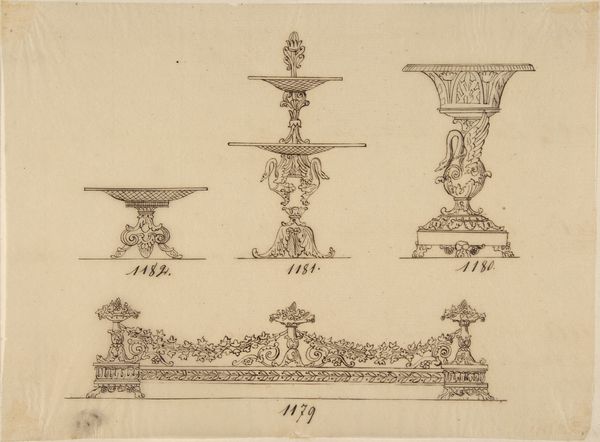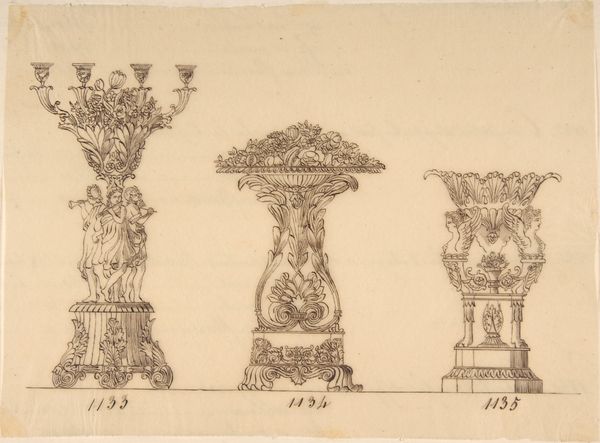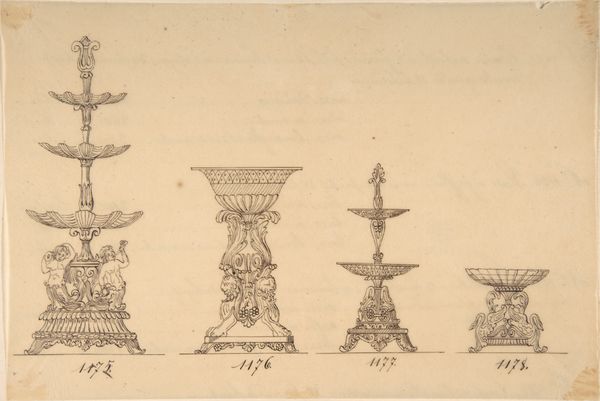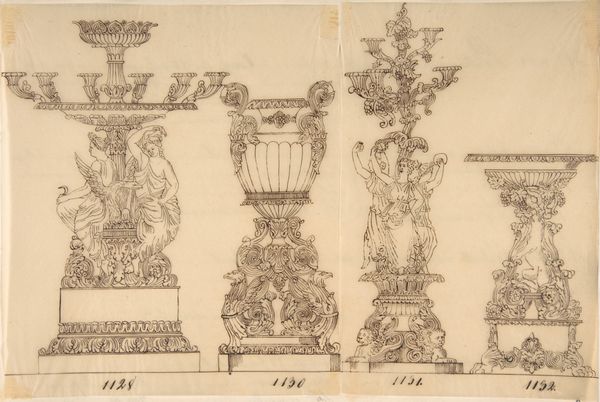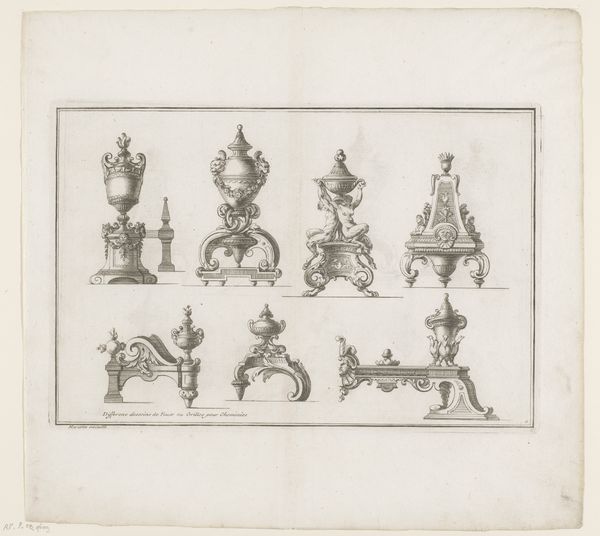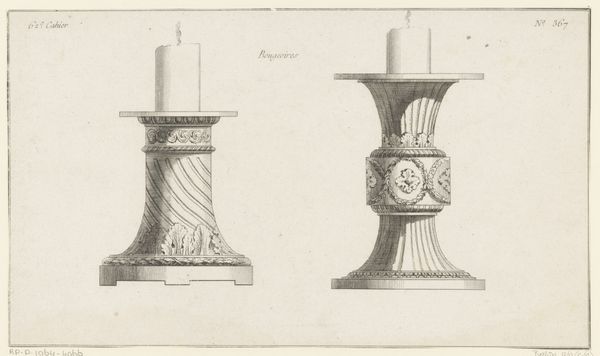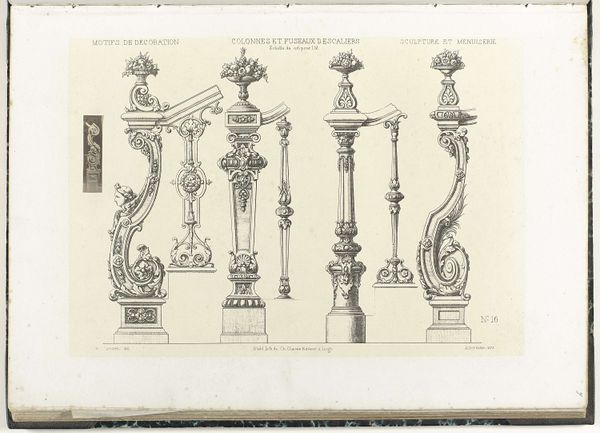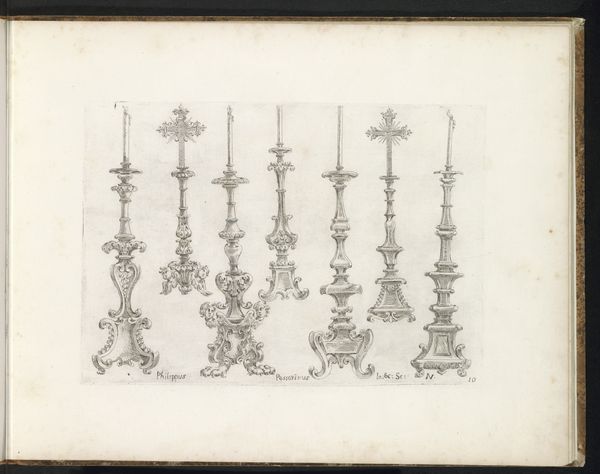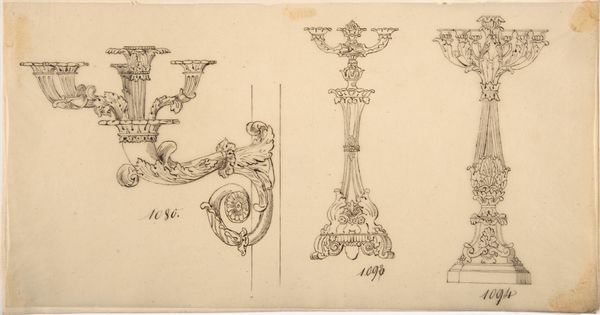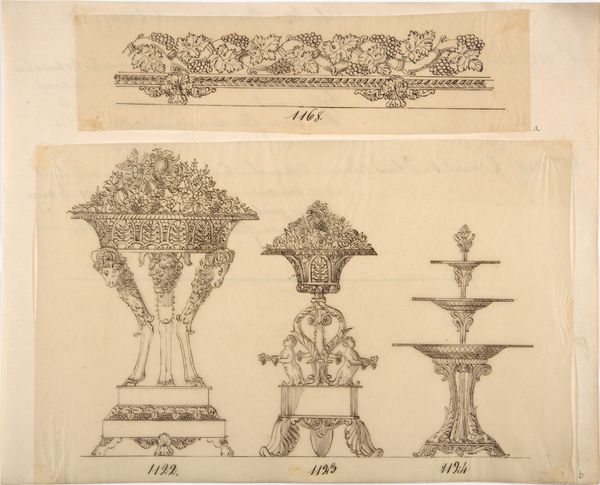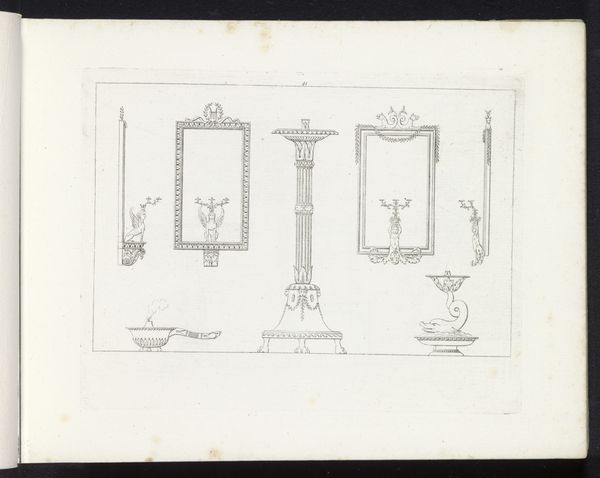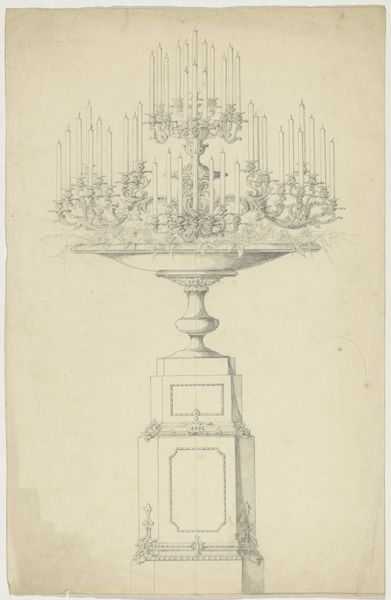
Designs for Serving Trays, a Dish and an Urn 19th century
0:00
0:00
drawing, print, etching
#
drawing
# print
#
etching
#
etching
#
geometric
#
line
#
history-painting
#
decorative-art
Dimensions: sheet: 6 15/16 x 9 1/2 in. (17.7 x 24.2 cm)
Copyright: Public Domain
Curator: Take a look at this fascinating print housed here at the Met, simply titled, "Designs for Serving Trays, a Dish and an Urn" from the 19th century. We don't know the artist, sadly. Editor: It has a kind of airy, whimsical feel. They’re almost floating, like architectural doodles dreamed up in a confectionery shop. You know? Curator: The process used to create the image gives it that delicate feeling, the etching emphasizing line and detail. As a medium, etching allowed for the reproduction and dissemination of these designs to a wide audience who could commission their own versions. It was all about reaching as many customers as possible. Editor: I wonder, what would it be like to actually eat from these trays and dishes? To live amongst such highly ornate objects? Would one feel elevated or utterly oppressed by beauty? It could swing either way. Curator: The use of classical motifs—cherubs, swags, leafy ornamentation—demonstrates how much of 19th century manufacturing still drew on earlier styles and themes for cultural credibility. It wasn't enough for a dish to hold things; it had to evoke history, class. Editor: So true. Even today we grapple with design choices based less on pure utility than on signals of social position, the echoes of grand traditions that subtly whisper to us from across the centuries. The little swan detail…*sigh* adorable. Curator: Exactly, which means we should always investigate what exactly is the object trying to say about its maker or owner? And how that statement plays within existing social and material systems. The production, the distribution of the design, and, finally, consumption itself—it all creates complex chain of meaning. Editor: Thanks. You know, thinking of them simply as "serving trays" feels like such a brutal reduction now. They’re bottled daydreams of elegance… fragile things… that would be quite difficult to wash in a modern dishwasher, probably. Curator: Yes! Exactly. It's important to reflect on what these objects meant, both as utilitarian items and as expressions of a broader culture—and on the hidden work to create and sell the object that usually vanishes in accounts of high art. Editor: Absolutely! And now I will certainly remember them, the next time I see similar patterns.
Comments
No comments
Be the first to comment and join the conversation on the ultimate creative platform.
